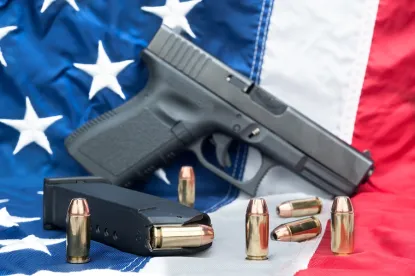In our blog shop, most of the news we scan is the nerdy minutia of regulatory nuance. But the other day, we found big news, a real scoop. The ITAR will be rewritten to remove guns and ammunition from its control.
Yes, you read that correctly, a plan has been proposed within the State Department to migrate the first three categories of the International Traffic in Arms Regulations (ITAR) to the control of the Export Administration Regulations within the coming year. Whether the State Department will go so far as to rename ITAR Part 121 the United States Munitions List (USML), the “United States List” remains to be seen.
The Proposed Changes
The proposed amendment to the ITAR appeared in notes on the Defense Trade Advisory Group (DTAG) meeting on Friday, September 8. For those of us who don’t live and breathe the ITAR, DTAG is the State Department’s working group that provides the Bureau of Political-Military Affairs with a formal channel to consult the private sector on all things concerning munitions exports.
According to those notes, USML Categories I, II, and III are expected to move from the USML to the EAR’s Commerce Control List (CCL) in 2018. Those categories are as follows:
-
Category I – Firearms, Close Assault Weapons and Combat Shotguns;
-
Category II – Guns and Armament; and
-
Category III – Ammunition/Ordnance
Who will benefit from the reform?
U.S. gun and ammunition manufacturers will have an increased capacity to reach a larger customer base without as many restrictions on the export of their products. U.S. firearm manufacturers and exporters will likely see a reduction in export compliance obligations. Arms sales from the United States will likely grow, and the United States will likely continue to hold and expand its share of the international arms market.
As just one example of the reduced regulatory burden, firearm, ammunition, and ordinance manufacturers would likely not have to register as ITAR manufacturers or exporters. That registration requires yearly renewal and the base cost of registration is more than two thousand dollars. Thereafter, those exporters would not need to apply for the more difficult to obtain ITAR export licenses in order to sell their products for foreign countries.
What restrictions will limit the export of guns and ammunition?
The change in control does not equate to a free for all. We expect that many of the former Category I, II, and III items will migrate to the “600 series” of the CCL. Those 600-series items generally require licenses for exports or reexports, except when the item is exported or reexported to Canada or, when operating under license exception, any of the countries party to the Strategic Trade Authorization (STA).[1]
Where a license is required, exporters will still need to apply for a license through the Simplified Network Application Process Redesign (SNAP-R) maintained by the Department of Commerce Bureau of Industry and Security. Customs will also continue to require exporters to file an Electronic Export Information (EEI) submission.
Your approach
As always, your approach depends on your risk tolerance.
If your company is the quick draw type, it may choose to wait until the rules finalizing the migration are published to take action.
If your company takes time to sight, aim, and control its breathing before firing, you may choose to analyze your company’s controls and create logistics plans for exporting Category I, II, or III under the new regulations. It may be worth taking a close look at your current company procedures and operations to anticipate how you can adjust your business operations to adapt to the changes. It will be important to note, however, that the U.S. firearms industry is also regulated under other federal and state firearm laws.
Whichever path you may choose, we recommend not discounting the benefits of taking a targeted approach to review and revise your company procedures and operations as appropriate.
[1] Those countries include the following:
|
Argentina |
Australia |
Austria |
Belgium |
Bulgaria |
Canada |
|
Croatia |
Czech Republic |
Denmark |
Estonia |
Finland |
France |
|
Germany |
Greece |
Hungary |
Iceland |
Ireland |
Italy |
|
Japan |
Latvia |
Lithuania |
Luxembourg |
Netherlands |
New Zealand |
|
Norway |
Poland |
Portugal |
Romania |
Slovakia |
Slovenia |
| South Korea | Spain | Sweden | Switzerland | Turkey | United Kingdom |




 />i
/>i

